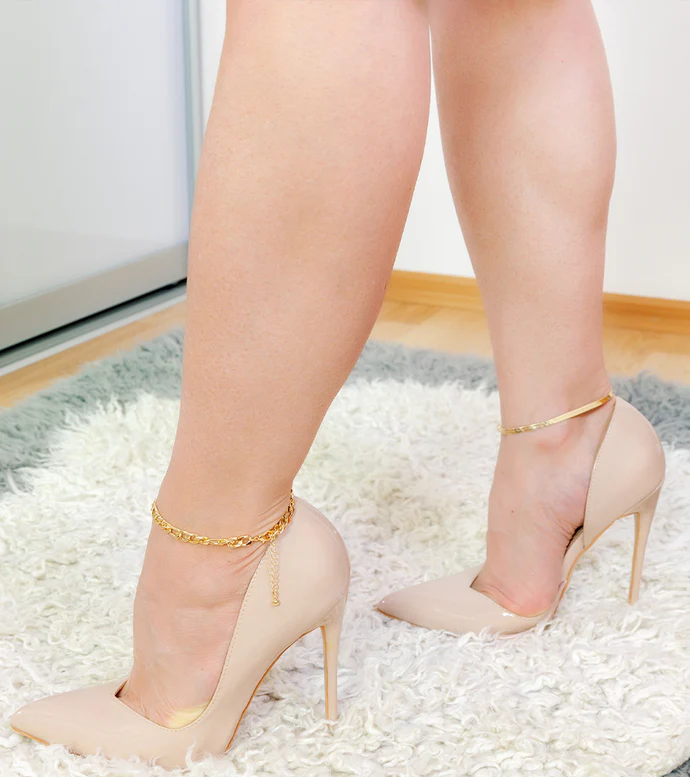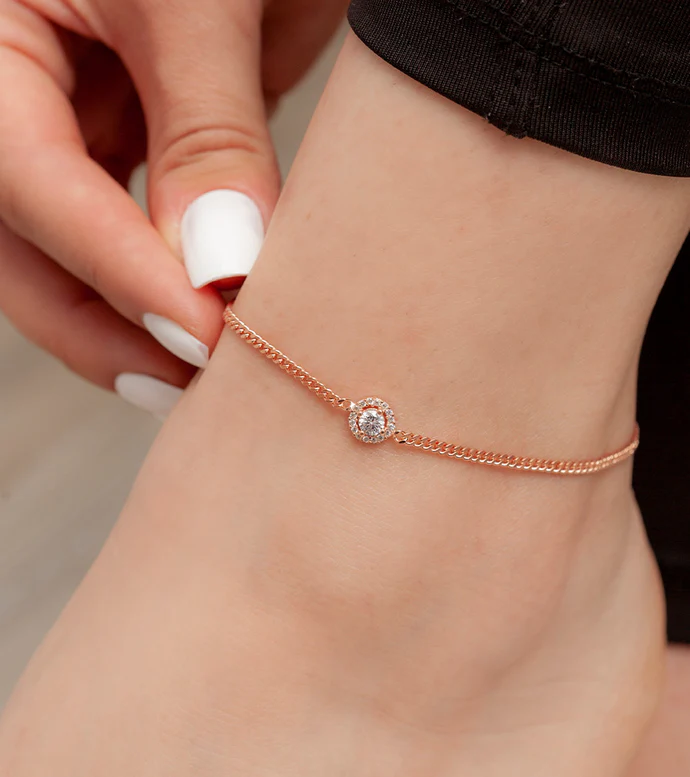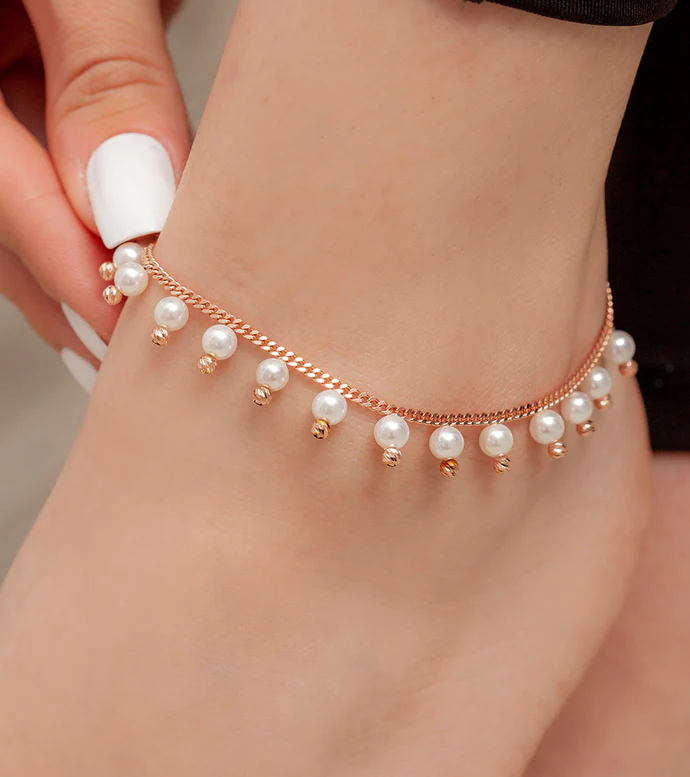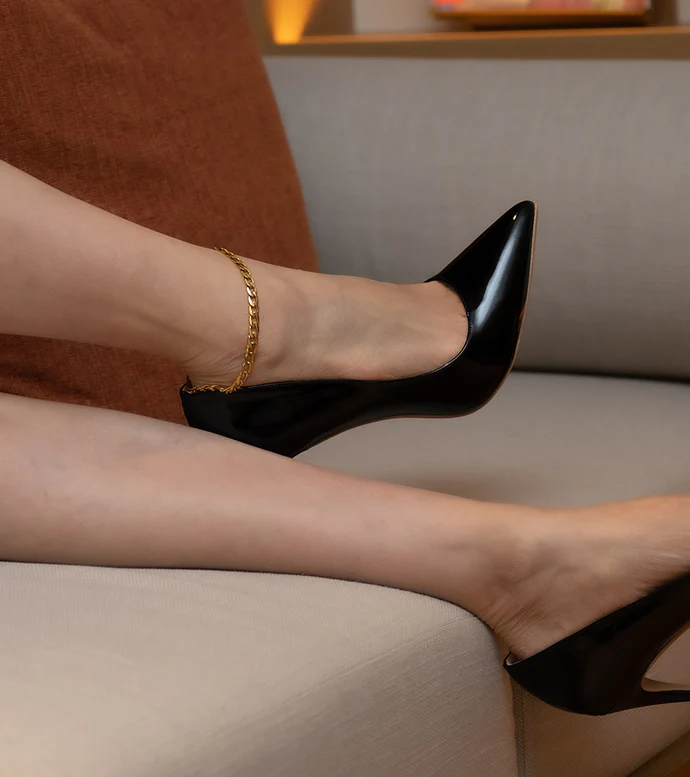Anklets Care Guide
Anklets, also known as ankle bracelets or ankle chains, have adorned the ankles of women and men for centuries. Today, anklets remain a timeless accessory, loved by fashion enthusiasts for their versatility and ability to add a touch of elegance and charm to any outfit. Just like any piece of jewellery, anklets are susceptible to wear and tear, and the elements they encounter daily can gradually dull their sparkle. Whether you've inherited a family heirloom or purchased a new anklet, knowing how to care for it will ensure that it remains an exquisite and cherished part of your collection for years to come.
OVERVIEW:
- Common materials used in anklets
- Everyday care tips for anklets
- When not to wear anklets
- Storage of anklets

COMMON MATERIALS USED IN ANKLETS
Anklets come in a wide array of materials, each with its unique characteristics and appeal. Some of the most common materials used in crafting anklets include:
Gold: Gold anklets are a timeless and luxurious choice. They come in various carats, such as 14ct and 18ct, with higher carats being more valuable but also more delicate. Gold anklets can be found in different styles, from delicate chains to chunkier designs with intricate patterns. The advantage of gold anklets lies in their enduring value, timeless appeal, and resistance to tarnishing. However, they may be more delicate and susceptible to scratches compared to other materials. The higher the carat, the softer the gold, making it more prone to bending or breaking under stress.
Silver: Silver anklets possess a captivating lustre and are more affordable than gold. They can range from simple, sleek chains to ornate designs with filigree work or charms. However, silver is prone to tarnishing, requiring regular maintenance. Silver anklets are admired for their brilliant shine and affordability. Nevertheless, they require regular cleaning and maintenance to combat tarnishing. Over time, they may develop a natural patina, which some individuals find attractive.
Stainless Steel: Stainless steel anklets are durable, resistant to tarnish, and often more affordable than precious metals. They are an excellent choice for those seeking a modern and versatile anklet option. Stainless steel anklets are durable, hypoallergenic, and resistant to tarnishing or discoloration. They are an excellent choice for those with metal sensitivities or active lifestyles. However, their appearance may not have the same lustre as precious metals.

EVERYDAY CARE TIPS FOR ANKLETS
Anklets, like any piece of jewellery, require regular care to maintain their shine and beauty. By incorporating simple everyday care habits, you can ensure that your anklet remains a captivating and cherished adornment. Let's explore some practical tips for anklet care:
GENTLE CLEANING
Regularly clean your anklet using a soft, microfiber cloth to remove dirt, dust, and oils that accumulate during daily wear. Gently wipe along the length of the anklet, paying attention to intricate details and crevices.
SOAPY SOAK
For metal and beaded anklets, create a mild soapy solution with warm water and a gentle soap. Immerse the anklet in the solution for a few minutes, and then use a soft brush or a toothbrush to remove any stubborn grime. Rinse thoroughly with clean water and pat dry.
GEMSTONE CARE
If your anklet includes gemstones, be cautious with cleaning methods. Some gemstones are sensitive to water and chemicals. Use a soft, damp cloth or a specialised jewellery cleaning solution recommended for the specific gemstones.

WHEN NOT TO WEAR ANKLETS
PHYSICAL EXERCISE
Before engaging in sports or intense physical activities, remember to remove your anklet. Activities like running, weightlifting, or contact sports can cause unnecessary stress on the anklet, leading to breakage.
WATER ACTIVITIES
Avoid wearing your anklet while swimming, bathing or engaging in water sports. Water can weaken the anklet's structure, especially if it’s made of delicate materials.
HARSH CHEMICALS
Always take off your anklet before engaging in activities that could expose it to harsh chemicals, such as chlorinated pools, using cleaning agents or using beauty products like lotions and perfumes. This also applies to performing household chores like gardening or doing dishes, it’s best to remove your anklet to protect it from potential damage and exposure to cleaning chemicals.

STORAGE OF ANKETS
INDIVIDUAL POUCHES
Store each anklet separately in soft cloth pouches or small jewellery boxes to prevent tangling, scratching, or damage.
MINIMISE EXPOSURE
Store your anklets in a cool, dry place, away from direct sunlight and humidity. Prolonged exposure to these elements can accelerate tarnishing, especially for precious metals.
By following these steps you can ensure that your anklet stays shiny and beautiful for years to come. Remember each anklet is unique, and proper care based on the materials used is crucial for maintaining their splendour.












